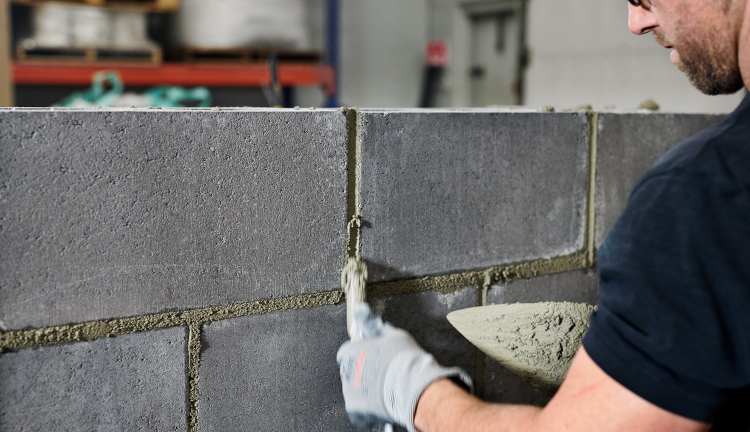
Concrete is the most used manmade material on Earth; each year, 30 billion tonnes of it is used around the world. Generally, this concrete is divided into two categories: ready-mix, or “cast-in-place” concrete, which is poured and cured on-site, and precast concrete, which is formed and cured off-site and transported to the building site as an end-product. For CarbiCrete, the precast concrete manufacturing process offers key benefits that allows for seamless integration with innovative carbon-negative process.
Precast concrete products include concrete masonry units (CMUs), also known as cinder blocks, pavers, retaining walls, beams, and concrete slabs. In order to manufacture precast concrete products, cement is mixed with aggregates and water, formed using a mould, and cured in a controlled environment. According to Nitterhouse, precast concrete became popularized in North America around the mid-20th century for creating efficient structures and paneled buildings.
When compared to ready-mix concrete, precast concrete exhibits many benefits in terms of both manufacturing conditions and environmental impact. Because precast concrete is manufactured entirely in a factory, production in a controlled environment leads to greater consistency in quality and curing. Due to its casting prior to production, precast concrete use leads to greater labour efficiency, capability for mass production, no weather delays or on-site form work, and efficient and sustainable material use.
A report on precast concrete’s environmental impact by the National Precast Concrete Association reiterates the benefits associated with precast concrete use. Because a precast concrete facility has consistent and easily manageable environmental conditions, as compared to the uncertainties of a construction site; this results in better quality concrete products. Precast concrete’s manufacturing process also allows for more careful monitoring and use of raw materials than ready-mix.
Use of precast concrete also prevents waste from rejected products and unused concrete that is inconsistently cured on-site. Whereas cast-in-place concrete utilizes single-use moulds, the machinery used in a precast concrete plant is designed to last for over 20 years, reducing material use and maximizing process efficiency. Precast concrete manufacturing offers additional environmental benefits including process water reclamation, material recycling, use of less toxic materials when compared to cast-in-place concrete, and optimization of concrete use through strict parameters for usage and quality.
CarbiCrete technology brings further benefits to utilizing precast concrete, in terms of both its environmental impact and overall cost. The main ingredient of concrete, cement, makes up only 10-15% of the concrete mix, yet it is responsible for nearly 90% of its total emissions. The CarbiCrete process replaces 100% of cement in the concrete mix with steel slag, a byproduct of the industrial steelmaking process. Concrete products are mixed and formed using the same equipment as cement-based concrete; it is then cured in a proprietary carbon dioxide absorption chamber, where it hardens to full strength.
Through the combined 100% cement replacement and carbonation curing, CarbiCrete concrete products can reduce the emissions associated with concrete production by over 100% when compared to conventional cement-based products. CarbiCrete technology also incurs additional benefits compared to conventional concrete manufacturing, including optimized water use, reduced need for raw material mining, and contribution to the Canadian circular economy. With the CarbiCrete process, precast concrete can optimize its existing benefits to become a truly sustainable building material.



